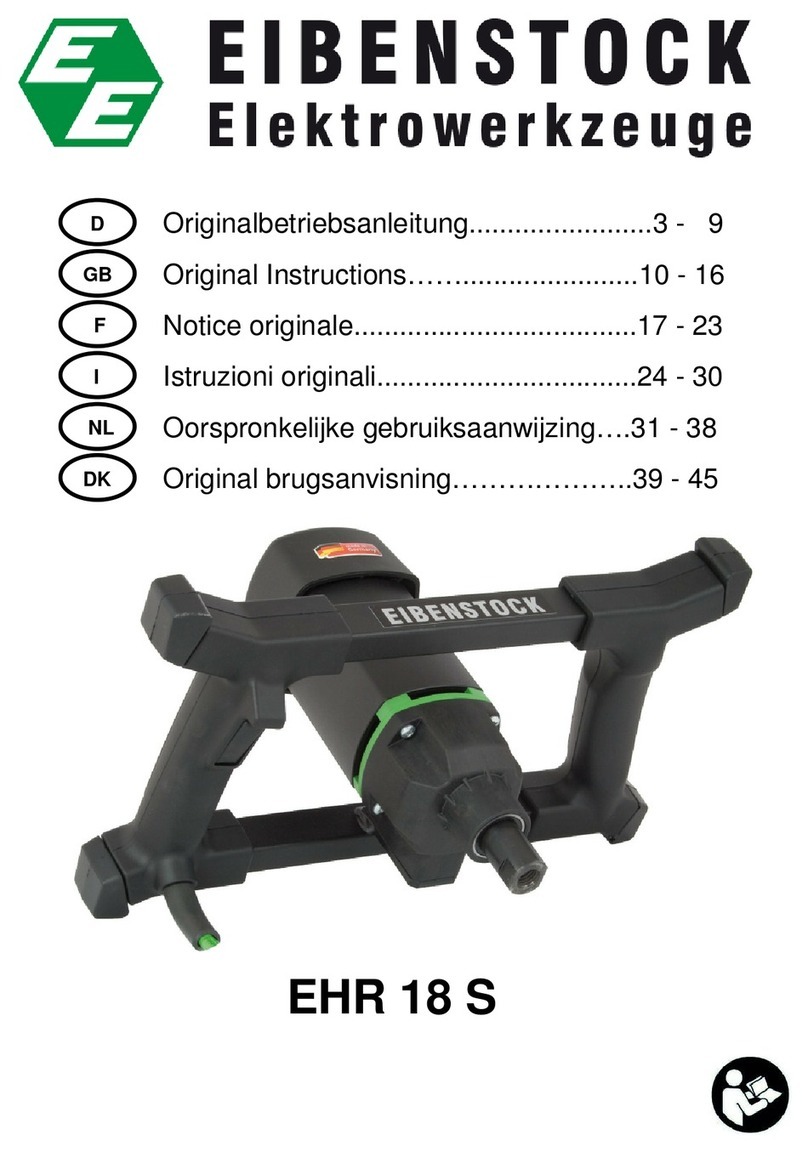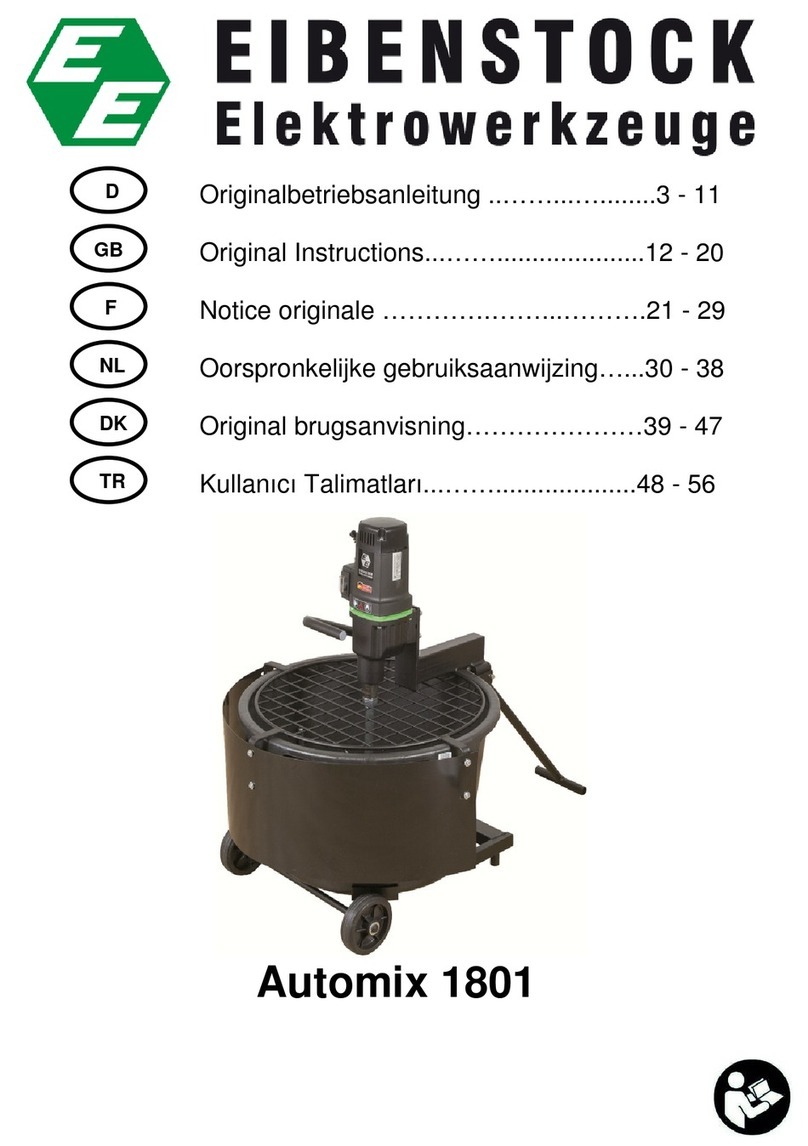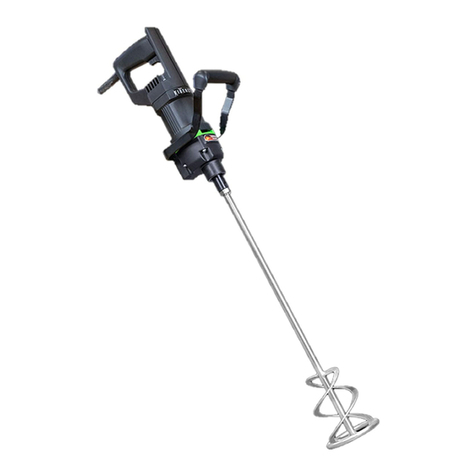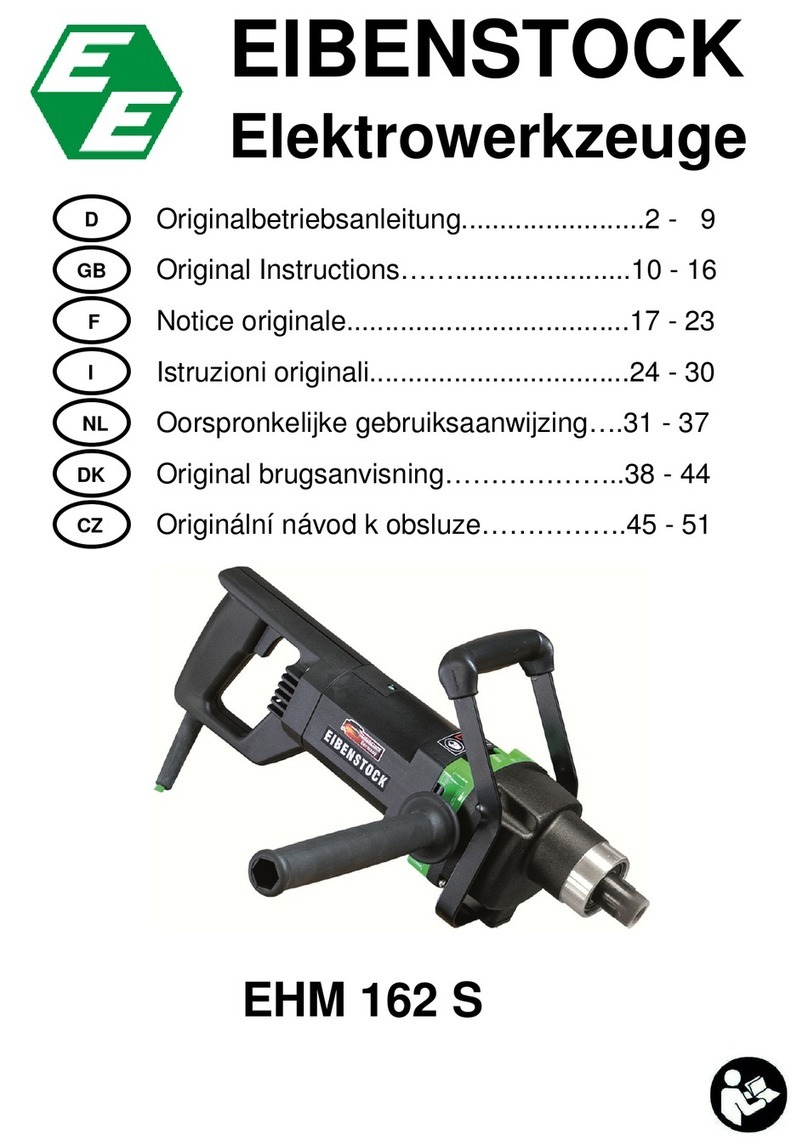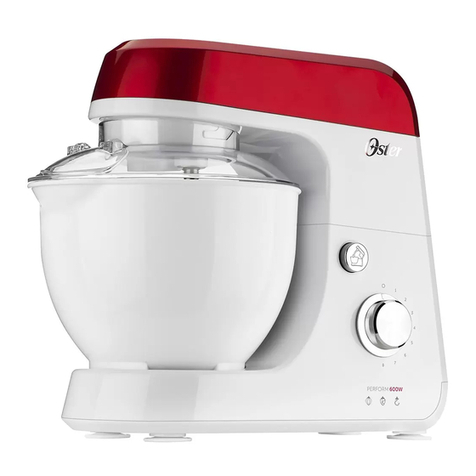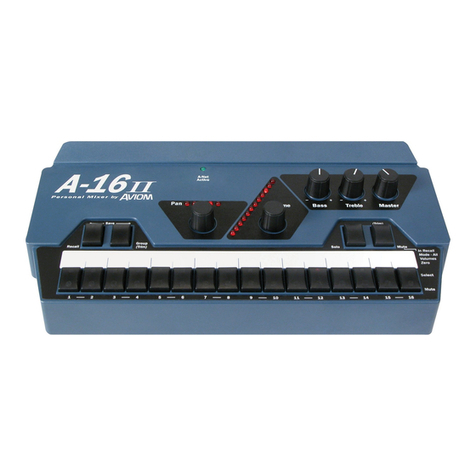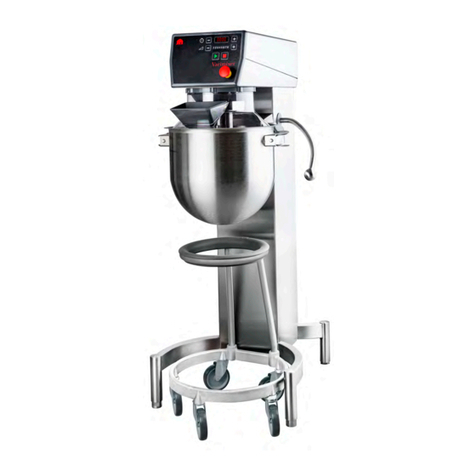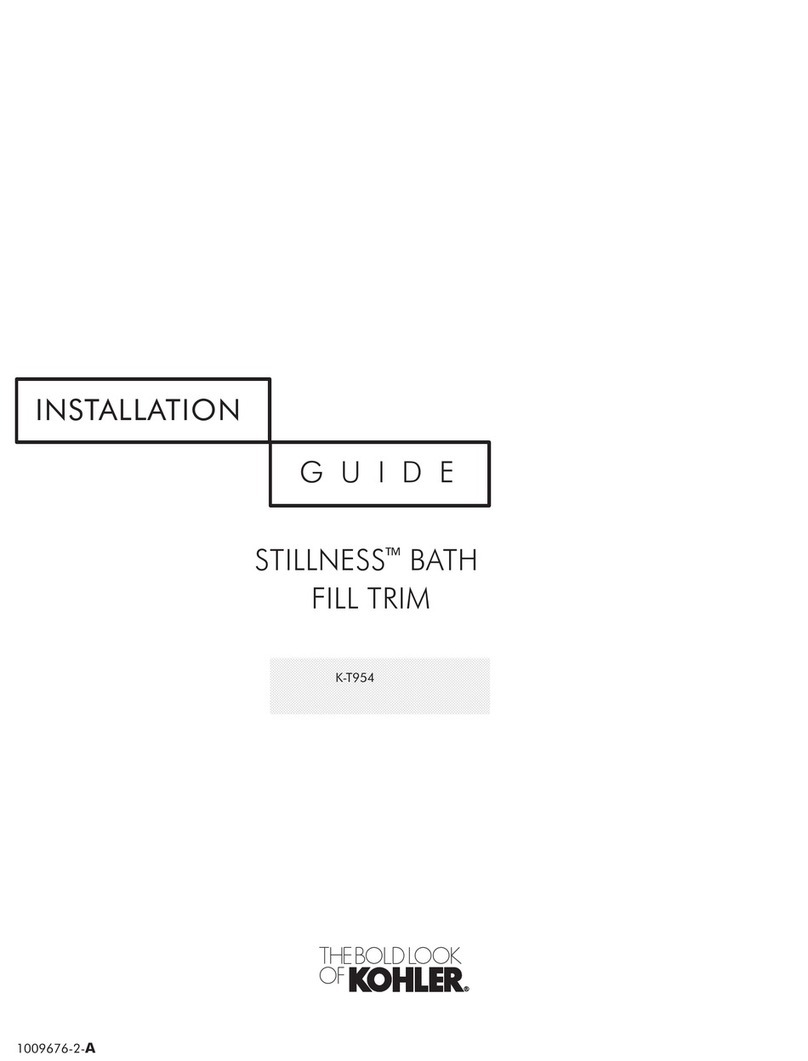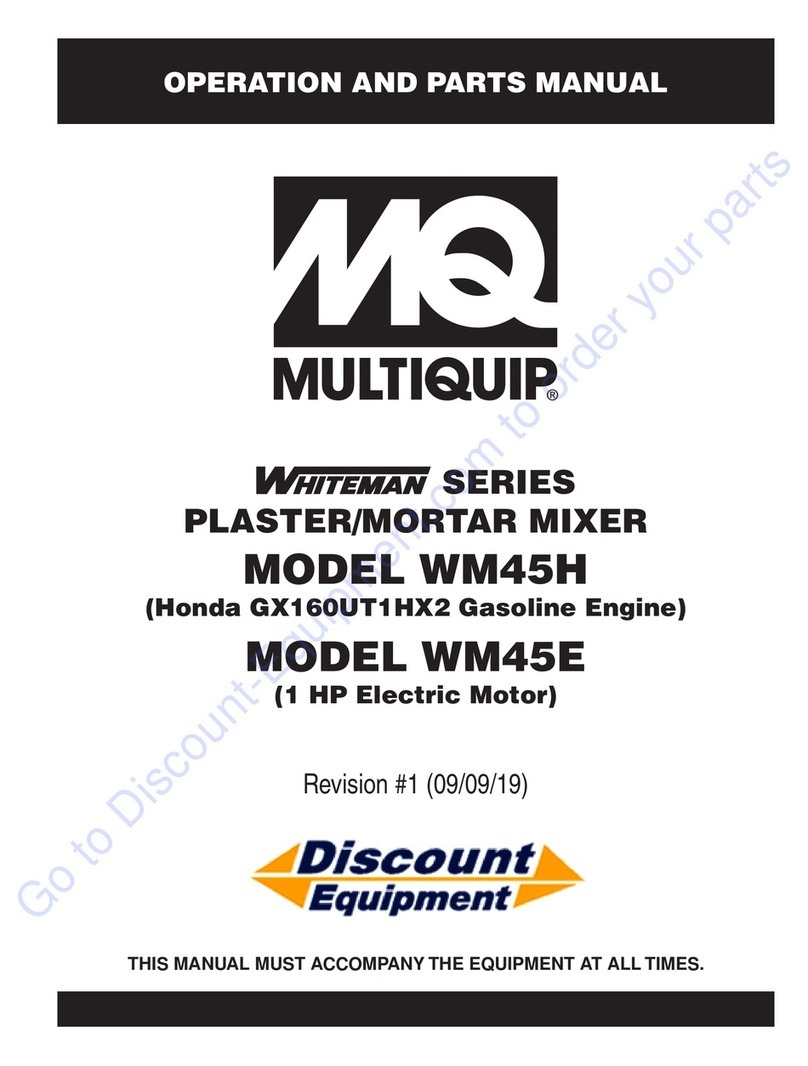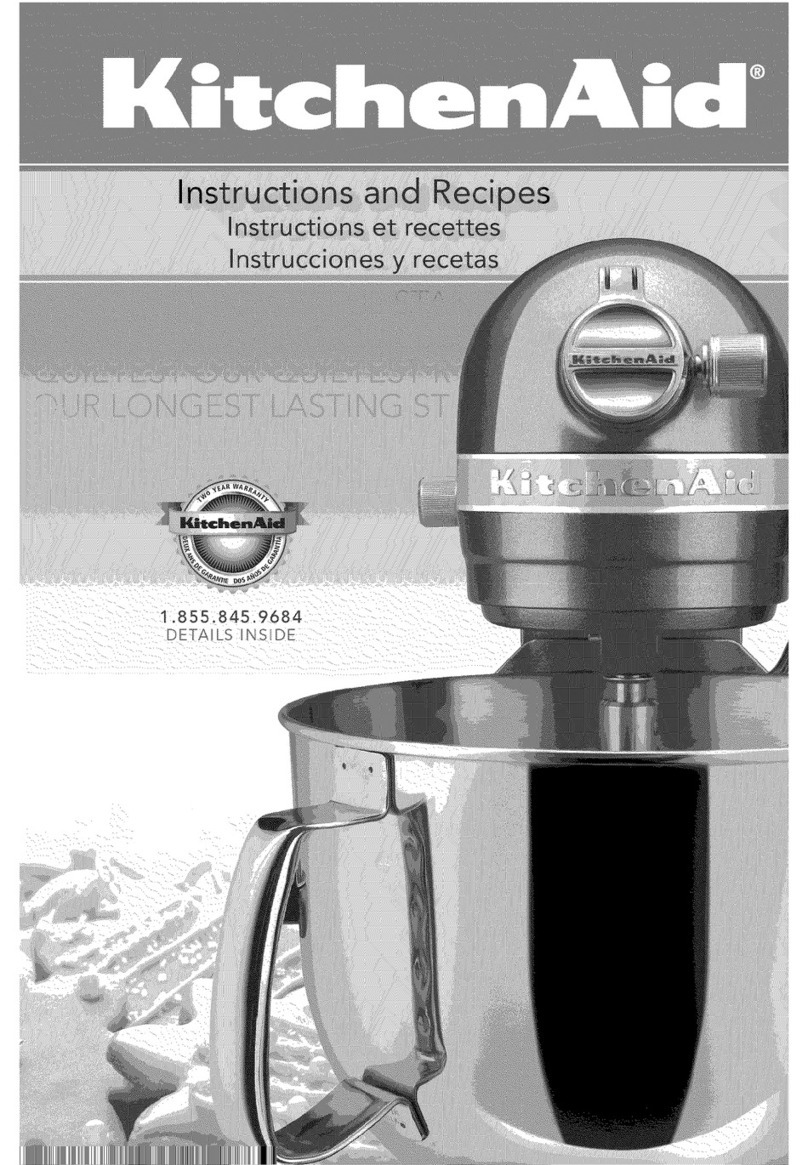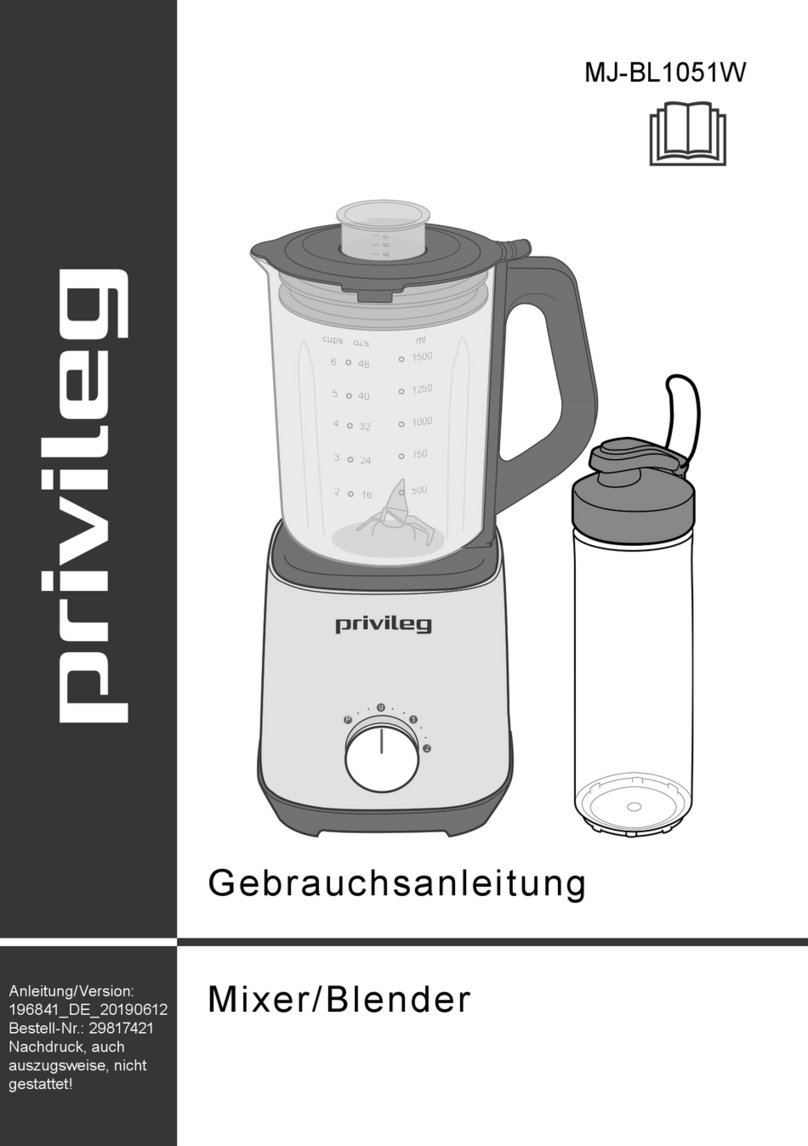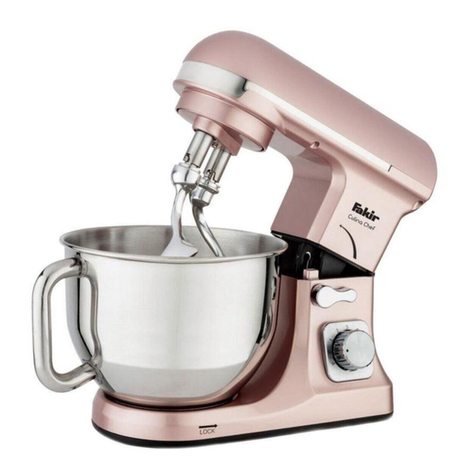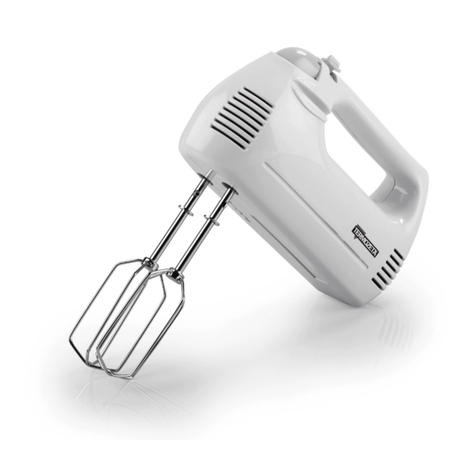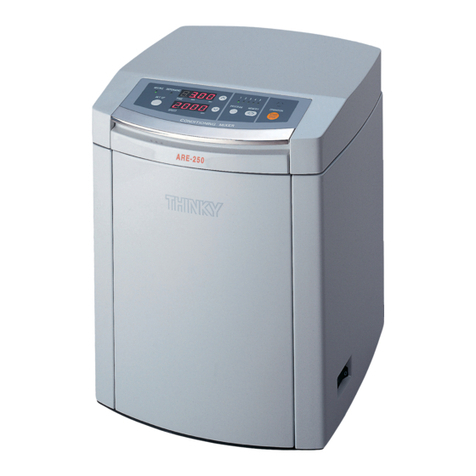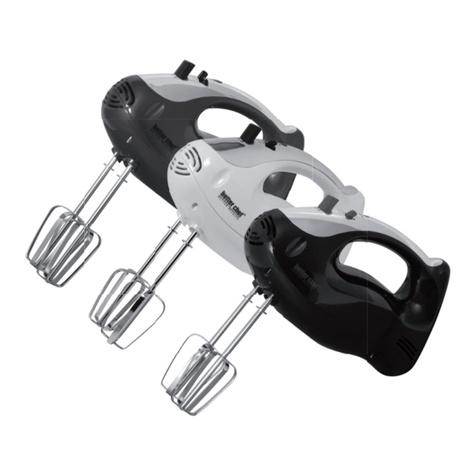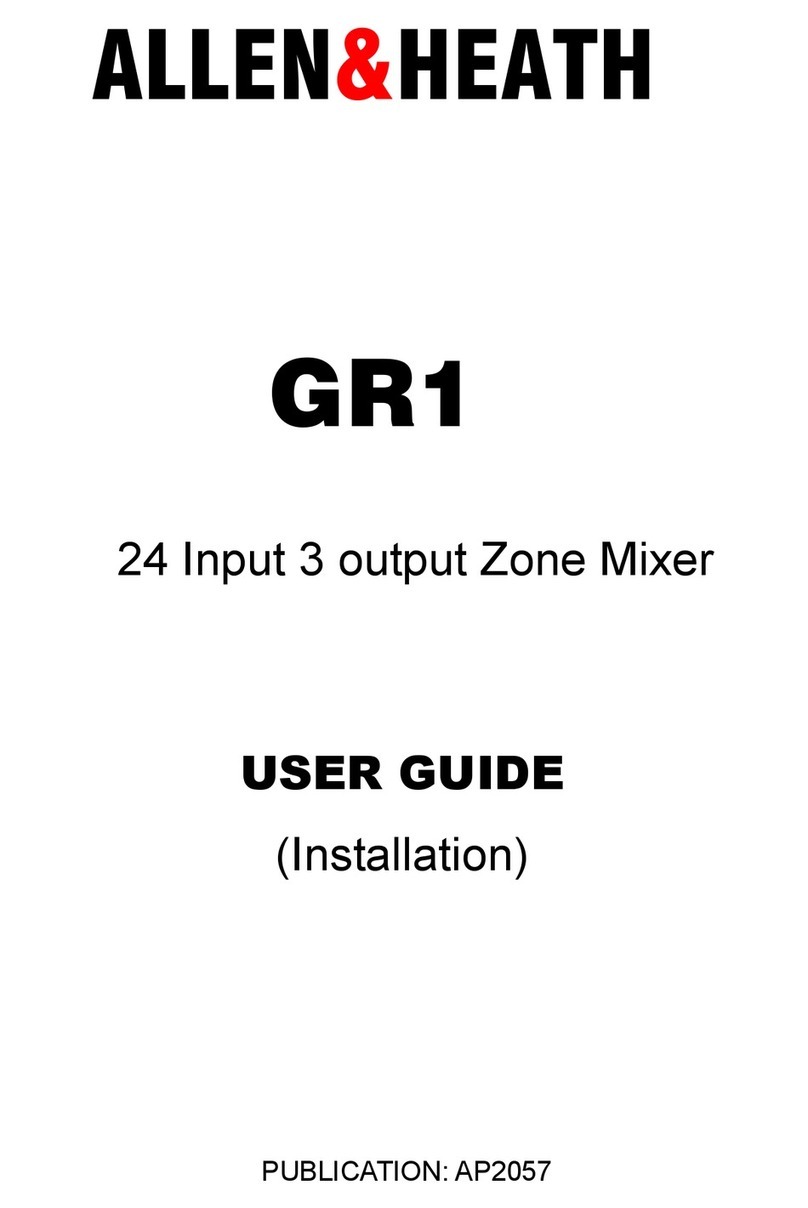
4
Tragen Sie das Gerät niemals am Kabel.
Vor jeder Benutzung Gerät, Kabel und Stecker überprüfen. Lassen Sie
Schäden nur von einem Fachmann beseitigen. Stecker nur bei
ausgeschalteter Maschine in die Steckdose stecken.
Manipulationen am Gerät sind nicht erlaubt.
Betreiben Sie das Gerät im Freien nur über einen Fehlerstrom-
Schutzschalter mit max. 30 mA.
Lassen Sie das Rührgerät nur unter Aufsicht arbeiten.
Ziehen Sie den Netzstecker und überprüfen Sie, dass der Schalter
ausgeschaltet ist, wenn das Rührgerät unbeaufsichtigt bleibt, z.B. bei
Auf- und Abbauarbeiten, bei Spannungsabfall, beim Einsetzen bzw. bei
der Montage eines Zubehörteiles.
Schalten Sie die Maschine ab, wenn Sie aus irgendeinem Grund
stehen bleibt. Sie vermeiden damit das plötzliche Anlaufen im
unbeaufsichtigten Zustand.
Kabel immer nach hinten von der Maschine wegführen.
Benutzen Sie das Gerät nicht, wenn ein Teil des Gehäuses defekt ist,
bzw. bei Beschädigungen an Schalter, Zuleitung oder Stecker.
Elektrowerkzeuge müssen in regelmäßigen Abständen einer Prüfung
durch den Fachmann unterzogen werden.
Halten Sie die Handgriffe trocken, sauber und frei von Öl und Fett.
Nicht in rotierende Teile fassen.
Vorsicht mit langen Haaren. Nur mit eng anliegender Kleidung arbeiten.
Personen unter 16 Jahren dürfen das Gerät nicht benutzen.
Tragen Sie beim Arbeiten mit dieser Maschine einen Gehörschutz,
einen Augenschutz und Schutzhandschuhe.
Während des Handbetriebes Gerät immer mit beiden Händen
halten und einen sicheren Stand einnehmen. Beachten Sie das
Reaktionsmoment der Maschine.
Weitere Sicherheitshinweise entnehmen Sie bitte der Anlage!
Prüfen Sie vor Inbetriebnahme die Übereinstimmung der Netzspannung
und -frequenz mit den auf dem Typenschild angegebenen Daten.
Spannungsabweichungen von + 6 % und – 10 % sind zulässig.
Das Rührgerät ist in Schutzklasse II ausgeführt.
Verwenden Sie nur Verlängerungskabel mit ausreichendem Querschnitt.
Ein zu schwacher Querschnitt kann zu übermäßigem Leistungsverlust und
zur Überhitzung von Maschine und Kabel führen.
Elektrischer Anschluss
